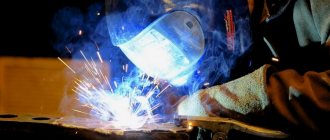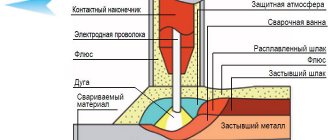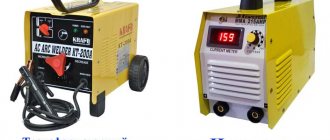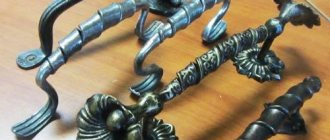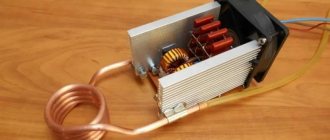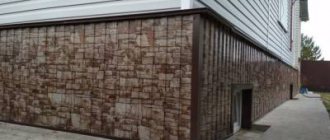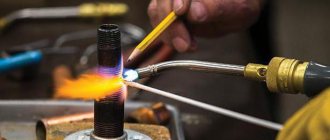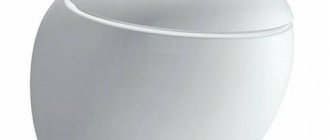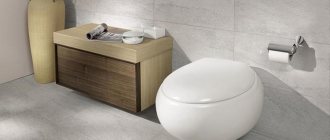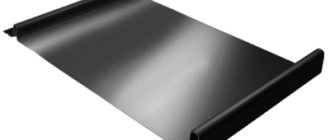When constructing fences on a metal frame, a welding machine is usually used. It helps attach the elements to each other. But the equipment is not available to everyone, and not everyone knows how to use it. Many owners of country houses prefer not to build a fence without welding, but using various fasteners.
Wicket design without welding
Preparing for work
First, you should evaluate the advantages and disadvantages of fastening a fence and gate without welding. The advantages include:
- affordable price;
- no risk of rust;
- quick and easy installation;
- aesthetic appearance;
- there is no need to form even the simplest strip foundation, supports carefully concreted in the pits are quite sufficient;
- large selection of shades;
- choice of textures, shapes, you can choose canvases that imitate wood, brickwork, etc.;
- the ability, if desired, to make a product decorated with forging;
- the fence will carefully hide the personal life of the owners from prying eyes.
The main disadvantages are:
- requirements for tightness of seam processing;
- the outer layer does not respond well to mechanical stress; if damaged, corrosion begins to progress.
Territory marking
First you need to measure the total length of the fence. This simplifies the planning and calculation of materials. The easiest way to do it is this:
- Pegs are placed in the corners of the site. But the border is not always exactly smooth, without kinks. This means you will need to drive pegs into the turning points. To begin with, it is recommended to check the area plan so that in the future there will be no conflict situations with neighbors or cases of violation of the law.
- Stretch the rope between the pegs, placing it 10-20 cm from the ground, paying attention to the tension force. After completing the manipulations, the length of the string is measured with a tape measure - this is the length of the future fence.
Selection of corrugated sheets
To select corrugated sheeting, you first need to look at the landscape, relief, and climate. When the fence is of small height and located in an area with little wind, then material marked C-8, C-10 is sufficient. But for a high fence in an area with frequent gusts of wind, for example, in open space, sheets C-14, C-15, C-18 are required. When increased strength is needed, it is better to give preference to S-20 or S-21.
To figure out exactly which material is suitable, it is not enough to know the brand. It is important to take into account the features. All 1.25mm thick sheets are cold rolled so the overall width is reduced due to deflections. The higher the profile, the narrower the sheet.
This will not be felt on a separate element, but in a fence 50-100 m long it will be noticeable. It requires more sheets with high ribs and fewer with low ones. Considering the difference in price, costs increase impressively. It is necessary to calculate the width of the spans so that the overlap is as minimal as possible - just a wave. It should not be constructed end-to-end.
Choosing a coating for profiled sheets
Corrugated sheeting is a complex structure with many layers. Everyone plays an important role. The maximum effect can be achieved with a combination of using high-quality sheets and high-quality flooring. If one of the components turns out to be of poor quality, the result will be bad in any case.
The main types of coatings are:
- Aluzinc is a chemical-based coating, a mixture of zinc and aluminum, has a presentable appearance, and is often used for industrial fences. Aluzinc is painted on top with oil and acrylic paints for metal.
Aluzinc
- Zinc is the most unreliable and affordable sheet, made from galvanized steel. It is rarely used for garden areas and park areas. It is actively used for industrial enterprises and warehouses. The sheets are not very presentable, but they are very strong and durable.
- Polyester - this type of corrugated sheeting is best suited for a suburban area or cottage. It tolerates precipitation well, exposure to chemicals, and solvents. Splashes and stains are washed away well by rain and under the pressure of water. The gloss looks neat and clean.
- Pural, plastisol - a more resistant sheet to environmental conditions, costs more than others. It is usually used for luxury construction. The surface will look new throughout the entire period of operation, several decades.
Execution options
The operating conditions of the chain-link require a protective coating for the wire, otherwise the mesh fence will become covered with rust after several rains. Galvanized wire successfully resists metal corrosion in areas remote from sea coasts.
Chain-link fence at the dacha
High air humidity with a high salt content requires more serious protection of the entrance structure material, so homeowners in the coastal zone install chain-link fences coated with PVC.
Metal mesh, protected by a polymer coating of different colors, in addition to its high anti-corrosion properties, has decorative qualities. By choosing a chain-link with a protective PVC layer of a suitable color, the fence and gate harmoniously fit into the color scheme of the estate.
The photo shows the gate of a private house.
Mesh structure on site
Material calculation
Typically, craftsmen recommend installing gates of standard sizes: 100 cm wide and 200 cm high. The exact height level is often selected arbitrarily, taking into account the height of the gate and the fence itself. In addition, there are different designs for the frame of the gate - the volume of material spent depends on this parameter.
For supports, it is better to choose metal profiles with a square cross-section of 60×60 mm, at least 2 m in length. Instead of profiles, you can install pipes with an equal diameter. An additional option is timber, but the tree has a high risk of rotting and needs repair work soon.
The approximate distance between the pillars is 3 m. The distance between the two pillars at the corners multiplied by the span length is the number of pillars required. The height of the pillar will be the height of the corrugated sheet and another 1 m margin for stability in the ground.
A metal profile is required for the crossbars, size 40×20 mm, 2 mm thick. It is ideal when the length of the profile is equal to the length of the span, but in reality this is a rare coincidence, so the excess size will need to be cut off.
Material calculation
When the height of the future structure exceeds 2 m, then 2 rows of crossbars are made. If more, you need an additional row for reliability and strength.
The corrugated sheets are 0.5 mm thick, the wave height is about 20 mm. This will help the fence to successfully withstand strong gusts of wind. The sheets are not placed end-to-end, but always overlapped into a wave.
Dimensions and cost
The strength of the flexible material and the reliability of the use of chain-link mesh in the design of the gate directly depend on the combination of the wire diameter and the mesh size. The larger diameter of the steel wire allows the use of chain-link with large cells.
READ ALSO: How to Let Ivy Along a Fence
Fine-mesh mesh made of thinner metal is not inferior in reliability and quality. The most durable material is with the maximum metal content per square meter of the product: thicker wire and smaller mesh size - a more reliable fence or gate made of chain-link.
Fence mesh is sold in rolls, the parameters of which are 1.5–1.8 m in height and 10 meters in length.
Recommended cell sizes are from 20x20 to 50x50 mm.
The retail price per meter of chain-link made of galvanized wire 1.6 mm with a cell size of 50x50 mm is about 1,480 rubles. The same mesh made of metal with a diameter of 2.8 mm and a PVC coating costs from 2,330 rubles. If a strong fence is required, the thickness of the metal wire is at least 3 mm.
Mounting supports
To erect a fence, the height of which will be 2 m, on ordinary soil, you will first need to prepare pillars 3 m long. They are dug into the ground at a depth of 1 m. The work is carried out sequentially:
- Make markings, stretch the cord along the line of the future fence, securing it to the pegs installed in the corners of the turns.
- The points for installing supports are marked. Equal distances between them must be maintained.
- Dig holes up to 110-120 cm deep, lay a cushion of crushed stone. Its thickness is at least 10 cm, compact thoroughly.
- Place a post in each prepared hole, clearly checking the vertical. The stand should not give way; it should be additionally secured with supports, stones, etc.
- Mix a mixture of concrete, add a bucket of cement, 2.5 buckets of sand and 4 buckets of crushed stone, it is better if its size is 40 mm.
- Fill the supports in the holes at ground level.
After installing the support beams, 3 weeks should pass. During this time, the concrete mixture will have time to fully set and dry completely. Some self-taught craftsmen who do the work on their own do not pay attention to these timing recommendations and start work earlier, resulting in base distortions.
how to make a metal gate without welding
Forging Everyone! Budget forging
We bring to your attention wrought iron gates and gates for your home and garden. The catalog on our website contains photos of forged gates, wickets and their detailed characteristics. The price of forged gates is distinguished by its affordability due to serial production and well-established technologies, and the quality meets international standards or even exceeds them in many ways. You can purchase any products from our company at the lowest prices thanks to the joint purchasing service. Buying forged gates and wickets at a low price is acceptable for people who value their time and money.
Forged gates are one of the priority and popular areas of our production How to make a metal gate without welding . These are the very same how to make a metal gate without welding , from which you can be proud of your daughter. Such a business card must be made of excellent quality, which is within the capabilities of our craftsmen, who are able to produce how to make a metal gate without welding of any complexity while maintaining an affordable price. People have always strived for how to make a metal gate without welding . how to make a metal gate without welding is an indispensable part of the interior of your site, and if how to make a metal gate without welding is made by artistic forging, they become a decoration of the whole house. The customer can view sketches of how to make a metal gate without welding and choose what is more in harmony with his site and wallet when purchasing how to make a metal gate without welding . From an aesthetic point of view, how to make a metal gate without welding is an original and unique protective device. We are always open to cooperation with architects, designers, construction and contractor organizations in the field of how to make a metal gate without welding . We work for you at low prices to give you the opportunity to enjoy excellent quality at an excellent price. The price of how to make a metal gate without welding is the first thing the buyer pays attention to. There is an opinion that their prices are very expensive and inaccessible to the average buyer. But, you can purchase elegant how to make a metal gate without welding inexpensively on our website at an affordable price (from 7,000 rubles). As you can see, you can turn your home into a luxurious cottage at the lowest price!
Information on how to make a metal gate without welding
How to do
fence made of corrugated sheets
without welding
.
Video Metal
... A fence made of corrugated sheets
without welding
is an excellent result
without
... Fastening the corrugated sheets;
Installation of a gate
; The final stage.
Do you know how to do it yourself
gates and
gates
from
...
- Fences We will make the frame
of the gate
and gate from
a metal
pipe. To securely fasten the profile we use high-quality screws and rivets.
Metal gate
with your own hands,
how to make
a gate from
...
Do-it-yourself
metal gate how to make it
simply and beautifully... in the end, in place of the seam you should get a flat surface
without
traces
of welding
.
Gate
with your own hands - We build with our own hands November 29, 2012
... How to make a metal gate
with your own hands.
... Do not get confused, hinges without
a pin are welded to
the gate
.
To prevent the hinges from becoming distorted during welding
, we did this: we drilled two into them...
Installation of hinges for gates
do it yourself - Vamzabor.net What are the requirements for hinges on
wickets
and gates?
... deals with heavy metal gates
,
without a welding
machine.
... If you are wondering how to make
an up and over gate for ...
Home | Index
Fixing the crossbars
If you do not plan to use a welding machine, then the most convenient method of attaching horizontal crossbars to vertical ones is with bolts. At the fastening points, holes of the required size are first made with a drill. The crossbars are placed so that their widest part touches the pillars.
Fixing
The crossbars are laid in several stages:
- Upper, lower at a distance of 20-30 cm from the upper, lower edge of the calculated position of the profiled sheet.
- Central - placed when the design requires it, only when the fence height is more than 2 m. It is located in the middle, perpendicular to the supports.
Fastening the corrugated sheet
The sheets are secured with roofing screws or bolts. On crossbars and profiled sheets, you first need to drill holes of the selected diameter. Self-tapping screws can be screwed directly into the metal. To simplify the process, it is recommended to use a low-speed screwdriver.
It is required to install profiled sheets from the corner support. You need to pay enough attention to working with the first sheet. Subsequent ones are aligned to it. For a strictly vertical position, be sure to use a building level. The sheet is fixed at four points - approximately 15 cm from the edges, where the wave comes into contact with the beam. The next one overlaps the wave.
After finishing hanging the canvases, it is important to carry out additional fastening. This process is carried out by screwing in self-tapping screws every two waves along the entire length of the crossbar. If you do this less often, the sheets will bend, causing knocking and loosening of the entire fence.
If you stretch a string from the outside of the fence along the entire perimeter at the level of the crossbar, then getting into the beam will be much easier, and installation will be faster.
Wicket installation
You can make a gate yourself. Like the fence itself, constructed without welding, the gate is secured using mechanical fastening of the parts. For this purpose, the frame is first screwed on the reverse side. It is a rectangular profile measuring 40×20, which is mounted around the perimeter of the sheet.
In addition, the rigidity of the gate is increased by another crossbar. It is fixed inside the frame to opposite corners diagonally.
The gate is suspended using hinges; they are pre-fixed to the support. The gate leaf is attached to the hinges with bolts. The self-tapping screws for this may eventually become insufficiently reliable, and after a while the structure will begin to fail.
Advantages and disadvantages
A self-made fence sash made from chain-link mesh has a number of advantages:
- low cost, availability of materials;
- ease of execution;
- strength combined with lightness;
- minimal care;
- light transmittance.
The disadvantages include one parameter: the mesh fabric of the chain-link allows dust and drafts to pass through, making the area open to people walking by. In summer, if desired, this disadvantage can be eliminated by vertical gardening.
A chain-link fence is a support for a hedge: climbing ornamental plants will protect the area from dust, noise, and prying eyes. The gate can be decorated with annual vines, hanging a pot for hanging plants on top or strengthening a container for creeping plantings at the bottom.
READ ALSO: How to Make a Gate Lock from Corrugated Sheeting with Your Own Hands
The photo below shows a door near the house.
